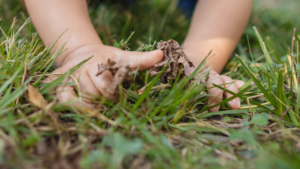In the next few posts, I’ll be writing about sensory integration and sensory processing disorders. Before we look at sensory processing disorder, it’s necessary to first look at the development of the central nervous system, which begins with the eight fundamental senses. The senses form the bedrock of sensory experiences from which all developmental milestones emerge. At the sensory motor level, infants and young children navigate the world, utilizing gravity, movement, and sensory feedback to establish postural security and motor planning. As they progress into perceptual motor development, they hone their abilities to interpret and respond to sensory stimuli, laying the groundwork for intricate skills crucial for daily life. In this developmental process, nurturing environments and supportive interactions play pivotal roles in fostering a child’s holistic development.
It All Begins With the 8 Senses
To understand sensory integration, we must start with the development of the central nervous system. This begins with the 8 senses. They are: Taste (Gustatory), Touch (Tactile), Hearing (Auditory), Sight (Visual), Smell (Olfactory), the movement-based senses; Proprioception (feedback from the muscles and the joints) and Vestibular (balance or equilibrium), and Interoception (sensitivity to stimuli from within the body).
Sensory Motor Development

Very young children collect information and sensations through the senses. The first level of development is sensory motor. Gravity helps the child to develop postural security, the ability to bring first his head, and then his body into an upright position and maintain an upright posture. Sensations of movement help him develop motor planning, meaning his movements are preplanned, or intentional. The information he needs to plan his movement comes from sensations he receives from his body. Movement such as rocking helps to organize the brain. Information from the child’s joints and muscles help him develop an awareness of both sides of his body and reflex maturity. Visual, olfactory, gustatory, auditory and tactile experiences foster his ability to screen input. Interoception helps the child recognize feelings of hunger, thirst and temperature. All of these sensations and experiences allow the child to develop body scheme, or awareness.
Sensory experiences are crucial to a child’s development. The young child learns to integrate the sensation of gravity, sensations from the muscles and joints and sensations received through his hands and knees, mouth, and ears. Eventually, the child will use these sensory integrations for speech, play and learning, and to master motor skills.
Perceptual Motor Development
The second level of development is perceptual motor. Perceptual motor development is defined as the ability to receive, interpret and respond successfully to sensory information. Having developed the sensory motor skills to learn about and start to control his body, the child moves through his environment gathering more sensory information and practicing skills to develop small motor development and coordination. With these new experiences, he develops more complex body scheme, eye-hand coordination, visual spatial perception and auditory language skills. These are the foundation for skills that he will need for daily living activities and behaviors. This growth and development lays the foundation for cognitive development and intellect. Nurturing caregivers, human touch, and opportunities for play and exploration support the child’s development.
The Brain, A Sensory Processing Machine

Jane Ayers first brought attention to sensory processing disorder and the behaviors associated with this neurological processing disorder. In Sensory Integration and the Child (Ayres, 2005) she refers to the young child’s brain as a “sensory processing machine” (p.7) because, rather than having thoughts or ideas about things, until he is about seven a child is busy taking in sensations while moving, talking and playing and processing those sensations. Her theory amplifies the importance of play and opportunities for gross motor activities that expose children to the sensory experiences needed to develop an awareness of self and the world around them. Play and exploration that includes the opportunity to manipulate materials also allow a child to collect sensory information. Perceptual motor development occurs when he can make sense of, and interpret the information and experiences.
Now that we have an overview of how the sensory system develops in children, in my next post I’ll look at sensory processing disorders.
Ayres, J. (2005). Sensory Integration and the Child: 25th Anniversary Edition. Los Angeles: Western Psychological Services.


